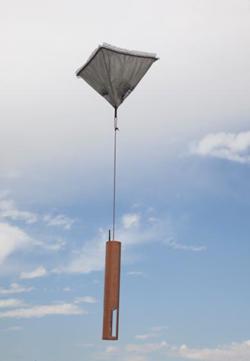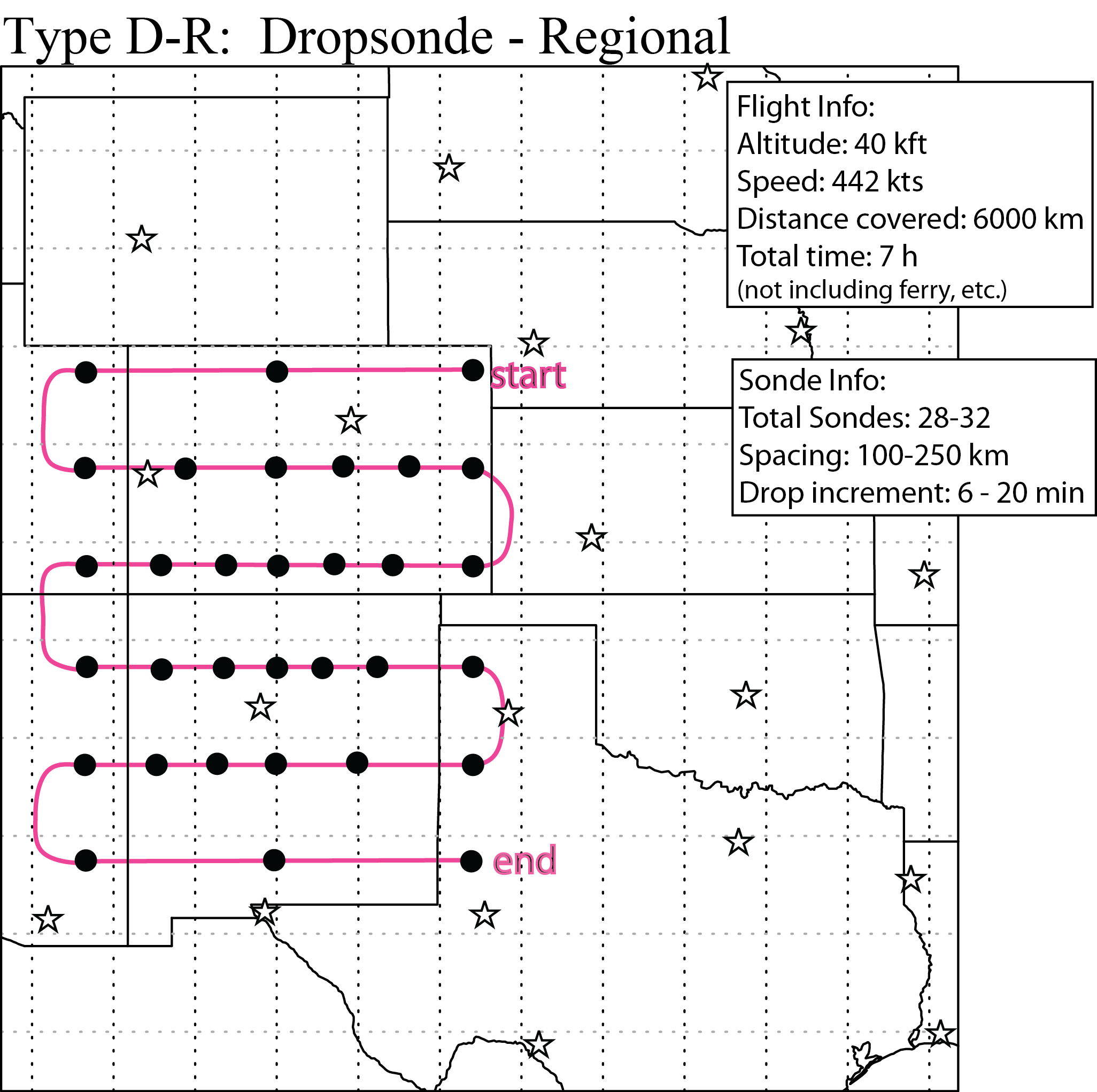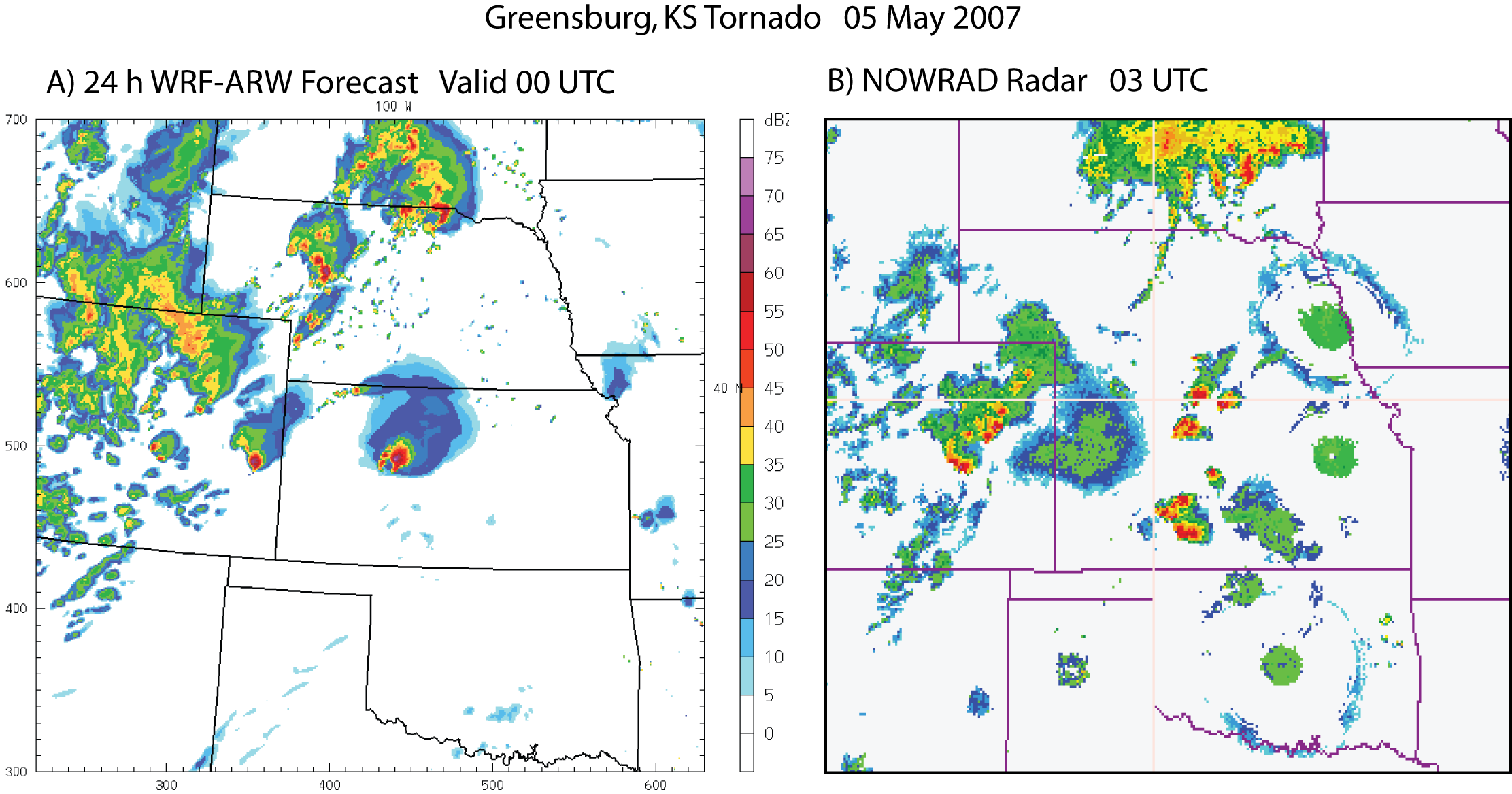MPEX
Mesoscale Predictability Experiment
 The Mesoscale Predictability Experiment (MPEX) was conducted within the U.S. intermountain region and high plains during the late spring/early summer of 2013 and included the use of the NSF/NCAR GV, along with the new Airborne Vertical Atmospheric Profiling System (AVAPS) dropsonde system and the Microwave Temperature Profiler (MTP) system, as well as several ground-based mobile upsonde systems, for the field experiment which took place during a 4-week time period from 15 May to 15 June 2013. The region of interest extended from Nevada eastward to the Mississippi River, and South Dakota/Wyoming southward through Texas (approximately 32.5°- 42.5° N latitude, 90°- 115°W longitude).
The Mesoscale Predictability Experiment (MPEX) was conducted within the U.S. intermountain region and high plains during the late spring/early summer of 2013 and included the use of the NSF/NCAR GV, along with the new Airborne Vertical Atmospheric Profiling System (AVAPS) dropsonde system and the Microwave Temperature Profiler (MTP) system, as well as several ground-based mobile upsonde systems, for the field experiment which took place during a 4-week time period from 15 May to 15 June 2013. The region of interest extended from Nevada eastward to the Mississippi River, and South Dakota/Wyoming southward through Texas (approximately 32.5°- 42.5° N latitude, 90°- 115°W longitude).
Scientific Objectives
MPEX was motivated by the basic question of whether experimental, sub-synoptic observations could extend convective-scale predictability and otherwise enhance skill in regional numerical weather prediction over a roughly 6 to 24 hour time span. The experimental plan was guided by the following two scientific hypotheses:
 Hypothesis 1: Enhanced synoptic and sub-synoptic scale observations and their assimilation into convection-permitting models over the intermountain region during the early morning will significantly improve the forecast of the timing and location of convective initiation as well as convective morphology and evolution during the afternoon and evening to the lee of the mountains and over the High Plains.
Hypothesis 1: Enhanced synoptic and sub-synoptic scale observations and their assimilation into convection-permitting models over the intermountain region during the early morning will significantly improve the forecast of the timing and location of convective initiation as well as convective morphology and evolution during the afternoon and evening to the lee of the mountains and over the High Plains.
Hypothesis 2: Enhanced sub-synoptic scale observations in the late afternoon, over regions where the atmosphere has been/is being convectively disturbed, will significantly improve the 6-24 hr forecast of convection evolution and perhaps initiation in downstream regions. Enhanced observations of convective storm-environmental feedbacks will correspondingly improve the synoptic-scale forecast.
Greensburg, Kansas Tornado, 5 May 2007
Figure from MPEX Proposal
(Click Image for Full Resolution)
Observations
 Basic operations involved two missions a day: an early morning mission (~3:00 am - 10:00 am) primarily over the intermountain region, and an afternoon and early evening mission to the lee of the mountains. The project time period was from 15 May to 15 June 2013, due to the known high frequency of widespread, severe convective outbreaks over the Great Plains region during this period (an average of 15 per year), and also due to the fact that such outbreaks are still often associated with synoptic and sub-synoptic scale forcing features moving eastward from the nominally poorly sampled intermountain regions. Ten intensive observation periods (IOPs) were requested and a total of 15 research flights took place.
Basic operations involved two missions a day: an early morning mission (~3:00 am - 10:00 am) primarily over the intermountain region, and an afternoon and early evening mission to the lee of the mountains. The project time period was from 15 May to 15 June 2013, due to the known high frequency of widespread, severe convective outbreaks over the Great Plains region during this period (an average of 15 per year), and also due to the fact that such outbreaks are still often associated with synoptic and sub-synoptic scale forcing features moving eastward from the nominally poorly sampled intermountain regions. Ten intensive observation periods (IOPs) were requested and a total of 15 research flights took place.

Example flight pattern and GPS dropsonde locations for the Type D-R deployment strategy |
The proposed observational strategy for each early morning mission was to release 28 to 35 dropsondes from an altitude of about 40,000 ft over a grid of spacing ~ 75-200 km. MTP observations continuously sampled the temperature structure through the mid- and upper troposphere in conjunction with the dropsonde data, enhancing the representation of any mesoscale or sub-synoptic scale features along the plane's path. The dropsonde and MTP data were incorporated into both realtime and retrospective data assimilation experiments using a variety of techniques (3DVAR, ENKF, etc.) to establish the potential benefits of such enhanced observations.
For the afternoon missions, 2-3 mobile upsonde units were positioned in the vicinity of convection to collect serial soundings as the storms developed and matured, thereby documenting both the immediate pre-storm environmental conditions as well as any subsequent storm-induced environmental modifications.
Unless otherwise noted, photos courtesy of Carlye Calvin, University Corporation for Atmospheric Research.
Principal Investigators:
- Morris Weisman NCAR/NESL
Chris Davis NCAR/ASP
Jeff Trapp Purdue University
Glen Romine NCAR/NESL
Project Manager:
- Pavel Romashkin NCAR/EOL/RAF
Data Manager:
- EOL Archive NCAR/EOL/DMS
